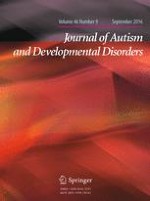15-06-2016 | Original Paper
Judgments of Nonverbal Behaviour by Children with High-Functioning Autism Spectrum Disorder: Can they Detect Signs of Winning and Losing from Brief Video Clips?
Gepubliceerd in: Journal of Autism and Developmental Disorders | Uitgave 9/2016
Log in om toegang te krijgenAbstract
Typically developing children are able to judge who is winning or losing from very short clips of video footage of behaviour between active match play across a number of sports. Inferences from “thin slices” (short video clips) allow participants to make complex judgments about the meaning of posture, gesture and body language. This study extends the use of the thin slice research paradigm to children with high-functioning autism spectrum disorder (ASD). We tested 38 children with ASD, in two age groups: 15 participants aged 5–8 years and 23 participants aged 9–13 years. We found that the children with ASD had a rate of accuracy similar to that of typically developing peers tested in a previous study.
